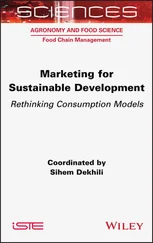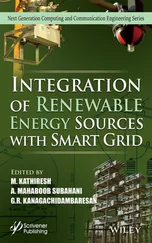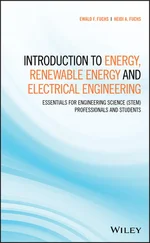Renewable Energy for Sustainable Growth Assessment
Здесь есть возможность читать онлайн «Renewable Energy for Sustainable Growth Assessment» — ознакомительный отрывок электронной книги совершенно бесплатно, а после прочтения отрывка купить полную версию. В некоторых случаях можно слушать аудио, скачать через торрент в формате fb2 и присутствует краткое содержание. Жанр: unrecognised, на английском языке. Описание произведения, (предисловие) а так же отзывы посетителей доступны на портале библиотеки ЛибКат.
- Название:Renewable Energy for Sustainable Growth Assessment
- Автор:
- Жанр:
- Год:неизвестен
- ISBN:нет данных
- Рейтинг книги:4 / 5. Голосов: 1
-
Избранное:Добавить в избранное
- Отзывы:
-
Ваша оценка:
- 80
- 1
- 2
- 3
- 4
- 5
Renewable Energy for Sustainable Growth Assessment: краткое содержание, описание и аннотация
Предлагаем к чтению аннотацию, описание, краткое содержание или предисловие (зависит от того, что написал сам автор книги «Renewable Energy for Sustainable Growth Assessment»). Если вы не нашли необходимую информацию о книге — напишите в комментариях, мы постараемся отыскать её.
This outstanding new volume
Renewable Energy for Sustainable Growth Assessment — читать онлайн ознакомительный отрывок
Ниже представлен текст книги, разбитый по страницам. Система сохранения места последней прочитанной страницы, позволяет с удобством читать онлайн бесплатно книгу «Renewable Energy for Sustainable Growth Assessment», без необходимости каждый раз заново искать на чём Вы остановились. Поставьте закладку, и сможете в любой момент перейти на страницу, на которой закончили чтение.
Интервал:
Закладка:
The primary source of industrial biomass comes from fish processing industries, including fish heads, viscera, vertebral column, fin, scales, and meat scraps as the fish processing industrial waste. The fish industry produces around 98g of fish waste per Kg of fish and fish crude oil waste of about 35g/100g of fish waste [24] ( Table 3.4). However, these wastes are rich in micronutrients that cause a heavy impact on the environment if left untreated, mainly due to the high organic load.
Table 3.4 List of industrial waste biomass, the process of conversion, and biofuel products.
| Sources of industrial waste | Biomass | Process of conversion | Biofuel products | Reactor | Reference |
| Tannery industry | A mixture of pelletized leather tannery waste and hardwood pellets | Combustion | Ash | Laboratory-scale combustion reactor (Perforated flat grate of combustion test reactor) | [55] |
| Hides, collagen-based solid wastes - shavings and offcuts | Pre-treatment by extrusion and enzymatic degradation | Biogas along with diauxie | Bioreactor | [23] | |
| Fish industry | Fish waste (FW) and Fish crude oil waste (FCOW) extracted from common carp ( Cyprinus carp io) viscera | Anaerobic digestion (AD) using VDI 4630 as a reference | Biogas (methane) | Anaerobic mono-digestion system - 2L glass reactor | [24] |
| Fish carcass and viscera | Oil extraction | Biofuel | - | [56] | |
| Combustible industry | Coal-water slurry based on coal processing waste (combustible industry waste) | Gasification by direct light induction through solar radiation (allothermal process) | Syngas | Nanosecond pulse and continuous-wave laser | [57] |
| Agroindustry | Cattle slaughterhouse waste - Slaughtering waste streams like paunch (PA), soft offal (SO) (intestinal residues, fat and meat trimmings, and some blood), dissolved air flotation sludge (DAF) | Anaerobic digestion (AD) at the mesophilic condition | Biogas | - | [25] |
The combustible industry is a fossil fuel industry like the coal processing industry. The waste arising from these industries is rich in hydrocarbon. On earth, the resources from fossils are costly and high in demand, and coal conversion technologies show adverse effects on contaminants’ atmosphere [58]. The animal-based agroindustrial sector releases a high amount of organic waste into the environment. This organic waste mainly consists of animal by-products like blood, paunch, fat and protein, bones of head and limb. It can spread human diseases like Creutzfeld-Jacob and bovine spongiform encephalopathy [25]. Considering these issues, researchers focused on converting industrial waste residues into energy resources ( Table 3.4).
3.3.1.5.3 Municipal Solid Waste
Municipal solid waste possesses paper and household wastes, non-degradable plastic waste, and non-flammable materials such as glass and aluminum from various residences [59], [60]. According to several variables, the MSW constitution varies according to household waste, seasonality, housing standards, and the prevalence of measures to reduce waste [60]. Municipal solid waste leads to a significant pollution concern worldwide [61]. All are regulated by dumping rubbish at municipal landfills, recycling to produce valuable products, and incineration for energy generation [59].
Unregulated OF-MSW’s (organic fraction of municipal solid waste) decomposition contributes to global warming and soil, water, and air pollution [60, 62]. Ebrahimian et al . [61] stated that OF-MSW could process high-value fuels and products to control these issues. Enterobacter aerogenes is one such promising bacterial organism process OF-MSW’s into various biofuel products such as 2, 3-butanediol (octane booster), bioethanol, acetic acid, and biohydrogen, and PHAs (polyhydroxyalkanoates), biomethane. The recovery of the carbon sources present in OF-MSW provided a considerable amount of energy (8236.9 kJ) and an environmentally sustainable bioplastic [61].
3.3.1.5.4 Food Waste
Food waste is recognized as a fascinating source of bioenergy [63]. Biodegradation of food residues is utilized for energy resources and the use of supplements ( Table 3.5). It is a productive solution to enhance food waste (FW) consumption. Many nations prefer food waste to biogas production as a viable biomass [64, 65].
3.3.1.5.5 Sewage Waste
Sewage is a type of wastewater that arises from industries, municipal areas, and domestic practices that possess 99% moisture content [70]. It has the foremost responsibility for environmental and health issues [71]. The treatment of wastewater expels out semi-solid slurry referred to as sewage sludge rich in proteins, carbohydrates, detergents, phenols, and lipids ( Table 3.6). Sewage sludge generated from the wastewater treating industries is higher at present [72]. Since sludge possesses organic matter and minerals it can act as an energy resource ( Table 3.6). They also include various toxic substances of phenol derivatives, aromatic hydrocarbons, Chlorine derivatives, chemical pesticides, and other harmful components [70]. Scum is a kind of basin sedimented at the bottom of the wastewater treatment plants ( Table 3.6). It consists of various hydrophobic compounds such as oil, grease, low-density concrete, algal debris, and either presence or absence of foams and bubbles [73]. Scum possesses a high calorific value, a large quantity of unsaturated fatty acid ester (57.5-64.1%), and lipid content compared to sewage sludge [74]. The fatty acid methyl esters (FAMEs) produced from scum are rich in oleic acid methyl ester, whereas sewage sludge constitutes palmitic acid methyl ester as an abundant source. By these aspects, Wang et al. [74] reported that sewage scum could be sufficient biomass for biodiesel production ( Table 3.6).
Table 3.5 List of food waste-based biomass, the process of conversion, and biofuel products.
| Food waste biomass | Process of conversion | Energy products | Reactor | Reference |
| Sludge from a pilot-scale high-rate activated sludge systems co-treating municipal wastewater and food waste | Anaerobic digestion at the mesophilic condition | Biogas | Laboratory-scale mesophilic digester | [66] |
| Thermal-acid pretreated sugarcane bagasse (SB) and untreated food waste (FW) with waste active sludge (WAS) | Anaerobic digestion | Biogas | Six different batch reactor under ambient condition | [67] |
| Food waste | Anaerobic digestion with activated persulfate | Biogas | - | [65] |
| Food waste (FW) and waste active sludge (WAS) | Anaerobic co-digestion with biological co-pretreatment | Biogas | - | [68] |
| Agri-food waste - Pellets of tomato waste and grape marc | Combustion | Biofuel | Domestic boiler | [1] |
| Pasteurized food wastes and dairy cattle manure | Thermophilic anaerobic digestion | Biogas | Batch and large volume laboratory digesters | [69] |
Table 3.6 List of sewage biomass, the process of conversion, and biofuel products.
| Types of sewage waste | Biomass | Process of conversion | Biofuel products | Reactor | Reference |
| Sewage sludge | Process water (PW) of dewatered waste activated sludge(DWAS) with primary sewage sludge (PSS) | Hydrothermal carbonization (HTC) and Anaerobic co-digestion (AD) at thermophilic and mesophilic conditions | Hydrochar (Solid fuel) and methane-rich biogas | Mesophilic digesters / Zipperclave 4L stainless steel thermostated reactor / Borosilicate glass digesters | [75] |
| Wet sewage sludge with 85% water content | In situ wet-transesterification | Biodiesel (BD) | Bench-scale (10L) reactor | [26] | |
| Sewage sludge | Pyrolysis | Ash | Membrane bioreactor based on wastewater treatment and sewage sludge from a domestic wastewater treatment plant. | [76] | |
| A liquid fraction from hydrothermal carbonization of sewage sludge | Anaerobic digestion (AD) | Methane | - | [77] | |
| Sewage sludge | Microwave pre-treatment and semi-continuous anaerobic digestion | Methane | Pyrex reactor under a mesophilic condition in semi-continuous mode | [71] | |
| Sewage sludge and marine and freshwater microalgae ( Isochrysis galbana and Selenastrum capricornut um) | Co-digestion under mesophilic and thermophilic conditions | Biogas | Semi-continuous reactors for acclimation and batch reactors for co-digestion | [78] | |
| Sewage scum | Lipids extracted by solvent-less separation from wet sewage scum | Direct esterification | Biodiesel (Fatty acid methyl esters (FAMEs)) | Three sequential batch reactors using a counter-current flow of reactants | [79] |
3.3.2 Biomass Conversion Process
Интервал:
Закладка:
Похожие книги на «Renewable Energy for Sustainable Growth Assessment»
Представляем Вашему вниманию похожие книги на «Renewable Energy for Sustainable Growth Assessment» списком для выбора. Мы отобрали схожую по названию и смыслу литературу в надежде предоставить читателям больше вариантов отыскать новые, интересные, ещё непрочитанные произведения.
Обсуждение, отзывы о книге «Renewable Energy for Sustainable Growth Assessment» и просто собственные мнения читателей. Оставьте ваши комментарии, напишите, что Вы думаете о произведении, его смысле или главных героях. Укажите что конкретно понравилось, а что нет, и почему Вы так считаете.












